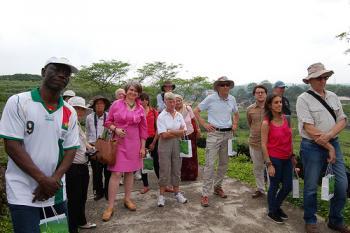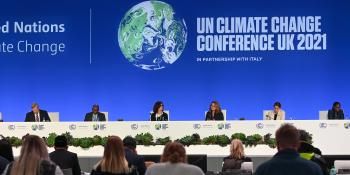Vietnam's fields to get 'climate proofed' with new investment focus

by Lieske van Santen and Meryl Richards
Asian economies stand vulnerable to climate change. Seven out of ten nations most at risk from climate change and natural disasters globally are in Asia, according to the Asian Development Bank. Risks of flooding in the coastal areas threaten dozens of millions of people.
Significant changes in rainfall patterns and water availability could also affect hundreds of millions of subsistence farmers and the hard to predict extreme events potentially disrupt much needed infrastructure and supply chains.
Against these challenges, the agriculture sector needs to play its part, and should be part of the solution. There is no silver bullet, but a climate-smart agriculture approach will involve growing more with less. More production, more efficiency, more diversity of produce and techniques with less carbon emissions, less water usage, and less soil degradation. 
To help with the transition to climate smart agriculture in Asia, the CGIAR Research Program on Climate Change, Agriculture and Food Security (CCAFS) recently opened a new Southeast Asia regional office in Hanoi, Vietnam!
Read more: Climate change research hub opens in Vietnam
According to CCAFS Program Director Dr. Bruce Campbell, “There are many excellent examples of climate-smart agriculture in Vietnam that could potentially be adapted for countries in Africa and other regions.” One key example is Vietnam’s strong public leadership around reducing emissions while supporting food security.
“Vietnam has set a target to reduce greenhouse gas emissions by 20%, increase GDP by 20%, and reduce poverty by 20%,” said Dr. Tran Thuc of the Ministry of Natural Resources and Environment at the inauguration of the new regional office.
International Rice Research Institute (IRRI) and World Agroforestry Center (ICRAF) already have long-standing work on climate smart agriculture in Vietnam. IRRI is currently developing monitoring, reporting, and verification (MRV) guidelines for greenhouse gas mitigation in irrigated rice systems. As part of the recently completed RUPES project, ICRAF developed policy mechanisms to reward the poor for ecosystem services such as carbon storage.
There is an opportunity to develop an investment strategy to increase production of home-grown, high quality food in a sustainable way! Such investment could help transform the agricultural sector into a modern, lean, and efficient one. Around US $40 Billion would be needed each year to build climate resilience in Asia, as estimated by the Asian Development Bank. How to get investment to flow in this direction? How can mitigation and adaptation options be turned into investable assets?
This question was discussed at the recent World Economic Forum summit in Myanmar, in a session focused on how public-private collaboration can realize a vision of agriculture as a driver of food security, environmental sustainability and economic opportunity.
In collaboration with the World Economic Forum’s New Vision for Agriculture, the Green Growth Action Alliance – a global alliance of public and private investors working to deliver financing for green growth, born at the G20 meeting in 2012 – is piloting an innovative Fund to attract significant resources in climate-smart agriculture assets in Vietnam, driven by the Ministry of Agriculture and Rural Development and investment experts such as Forest Finance and the Global Commons Floor.
The work on financing climate smart agriculture in Vietnam aims to provide proof of two things:
First, entrepreneurial spirit is helpful: new approaches to climate-resilient agriculture asset financing can help catalyse large-scale markets for sustainable products, helping to maintain growth in the region over the longer term and in the face of climate change risk. Public-private partnerships can help reduce risk and allow smallholders to access private investment.
Read more: Climate finance for agriculture and livelihoods
Second, the opportunities to trigger scale and replication of sustainable business models are vast: nations around the world are forming low emissions development plans with significant mitigation potential, according to a recent review on National Mitigation Plans (NAMAs) by Andreas Wilkes, Timm Tennigkeit and Katalin Solymosi. Some, such as Vietnam, are beginning to tap into the great potential of private investment to drive change towards the low-carbon economy, and CCAFS is ready with the knowledge to support them.
A fresh approach to financing climate smart agriculture is underway.
This story was written by Lieske van Santen, Global Leadership Fellow, Environment Initiatives, World Economic Forum and Meryl Richards, Science Officer, Theme 3: Pro-poor mitigation. Get more information about low-emissions development from the Pro-poor mitigation research site.


